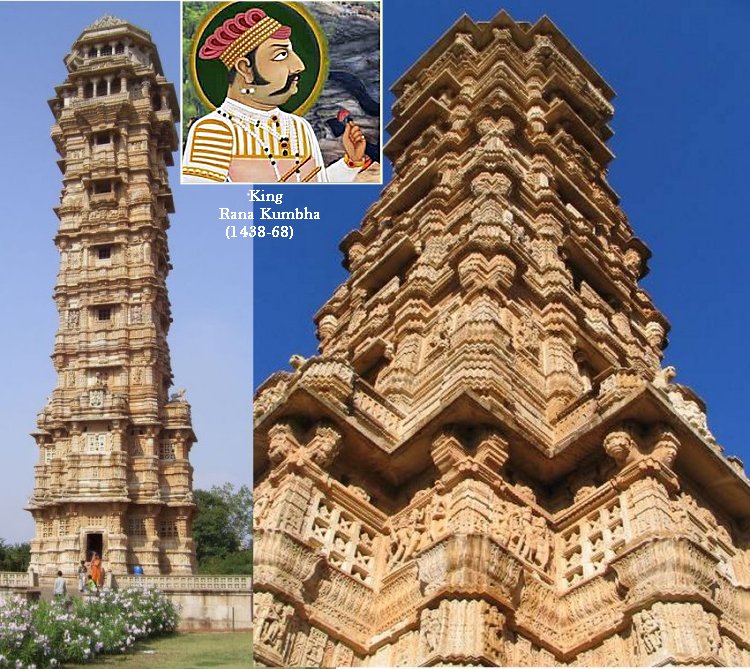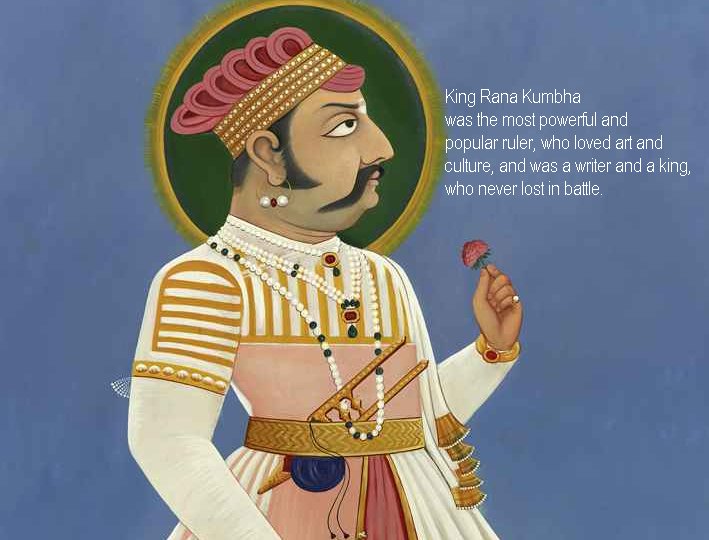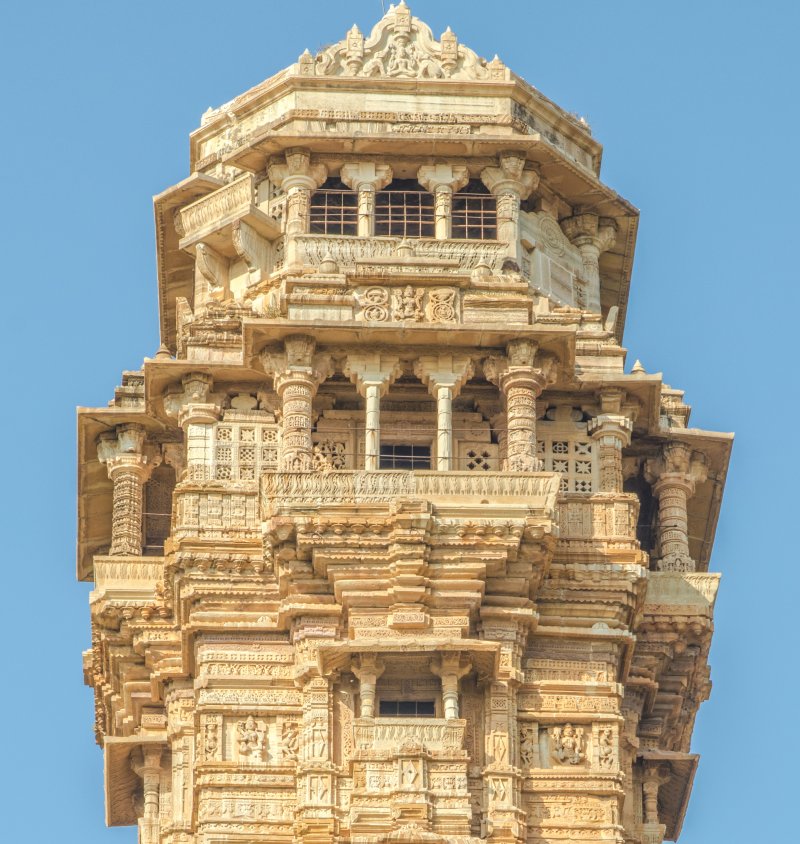A.Sutherland – AncientPages.com – Many spectacular architectural masterworks of India, like temples, mosques, monoliths, statues, gigantic forts, palaces, universities, and tombs, are left in legacy by the country’s builders.
One of them is the famous Victory Tower (Vijaya Stambh) at Chittorgarh fort, located in Chittorgarh city, Rajasthan, western India.

Tower of Victory (Jaya Stambh) erected by Rana Kumbha to commemorate his victory over Mahmud Khilji of Malwa in 1440.
The tower is dedicated to the most popular Hindu god, Vishnu, considered the world’s god.
However, numerous other drawings and inscriptions of various Hindu gods and goddesses can be seen.
This impressive structure of India’s craftsmen was built partly of red sandstone and partly of white marble. It has nine floors, and its remarkable height is 37 meters. The tower is a square structure that stands on a pedestal 10 feet (3.0 m) high. Each of the nine floors has openings and balconied windows on all four sides.
The most extraordinary thing is, the victory tower is visible from any area of Chittorgarh city. For reaching the top floor, there are 157 narrow stairs. The building’s interior is full of various carvings, and the towers’ murals display Hindu divine gods and goddesses and depictions images from the familiar Ramayana and Mahabharata epics.
After reaching the top of the tower, anyone can see a great and unique view of the whole city.
Without a doubt, the Tower of Victory is considered the finest example of the Rajputana style of art and architecture with highly decorative and beautifully carved elements.

Rana Kumbha pioneered the building of the tower to commemorate his victory over Mahmud Khilji of Malwa, the Muslim ruler of Delhi. This magnificent piece of architecture was built to celebrate the matchless bravery shown by Rajput Kings of that time.
Rana Kumbha (1438-68) was India’s great historical figure remembered as the ruler of Mewar, a state in western India between 1433 AD and 1468 AD’. Mewar was considered the world’s oldest-serving dynasty.
Rana Kumbha belonged to the clan of Rajput – descendants of ruling Hindu warrior classes of North India – who would rather die in battle than surrender.
When India was under the rule of Muslims, the brave Rajput King Rana Kumbha stood and held the Hindu flag. It was undoubtedly a very emotional atтιтude because Mewar was the only central state that was independent at that time.
Kumbha was a powerful and very popular ruler who loved art and culture. He was a king who never lost in battle. He represented the Rajput clan, described throughout history as warriors who fought bravely with many successes and could meet death without any fear.

A closer look at some of the many magnificent carvings of the Victory Tower, Rajasthan, India. Credit: Adobe Stock –Sundeep
But we must not forget, he was also among the most active patrons of the buildings. The Rajput rulers being great builders spent lavishly on constructions other than temples. They built dams, artificial lakes, canals, arched gateways, towers, fortresses, and palaces. Many of these buildings even today attest to the Rajput skill in architecture and engineering.
Written by – A. Sutherland – AncientPages.com Senior Staff Writer
Copyright © AncientPages.com All rights reserved. This material may not be published, broadcast, rewritten or redistributed in whole or part without the express written permission of AncientPages.com
Expand for references
References:
Royal Kings of India
Historical Rajasthan





